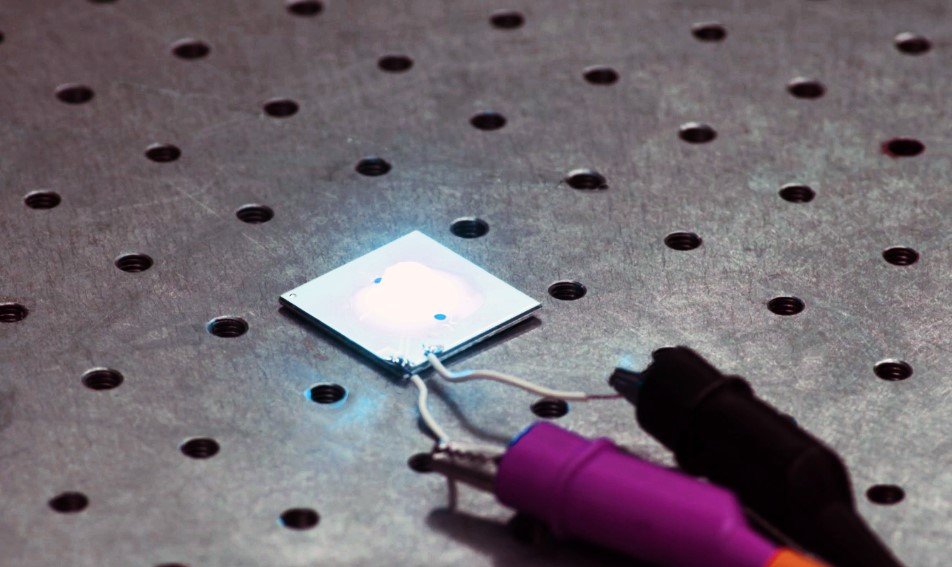
14th July 2018 New record efficiency for quantum dot white LEDs Researchers have demonstrated nanomaterial-based white-light-emitting diodes (LEDs) that exhibit a record luminous efficiency of 105 lumens per watt. Luminous efficiency is a measure of how well a light source uses power to generate light. With further development, the new LEDs could reach efficiencies of more than 200 lumens per watt, making them a promising energy-efficient lighting source for homes, offices and televisions. The researchers describe how they created the high-efficiency white LEDs in Optica, The Optical Society's journal for high impact research. The new LEDs use commercially available blue LEDs combined with flexible lenses filled with a solution of nano-sized semiconductor particles (known as "quantum dots"). Light from the blue LED causes the quantum dots to emit green and red, which combines with the blue emission to create white light.
Making efficient white LEDs requires quantum dots that efficiently convert blue light to red or green. The researchers carried out more than 300 synthesis reactions to identify the best conditions, such as temperature and time of the reaction, for making quantum dots that emit at different colours while exhibiting optimal efficiency. "Creating white light requires integrating the appropriate amount of quantum dots – and even if that is accomplished, there are an infinite number of blue, green and red combinations that can lead to white," explains Nizamoglu. "We developed a simulation based on a theoretical approach we recently reported and used it to determine the appropriate amounts and best combinations of quantum dot colours for efficient white light generation." To make the new LEDs, the researchers filled the space between a polymer lens and LED chip with a solution of quantum dots that were synthesised by mixing cadmium, selenium, sulphur and zinc at high temperatures. They used a type of silicone to make the lens, because its elasticity allowed them to inject solutions into the lens without any solution leaking out, and the material's transparency enabled the necessary light transmission. "Quantum dots hold great promise for efficient lighting applications," says Nizamoglu. "There is still significant room for technology development that would generate more efficient approaches to lighting."
Comments »
If you enjoyed this article, please consider sharing it:
|







